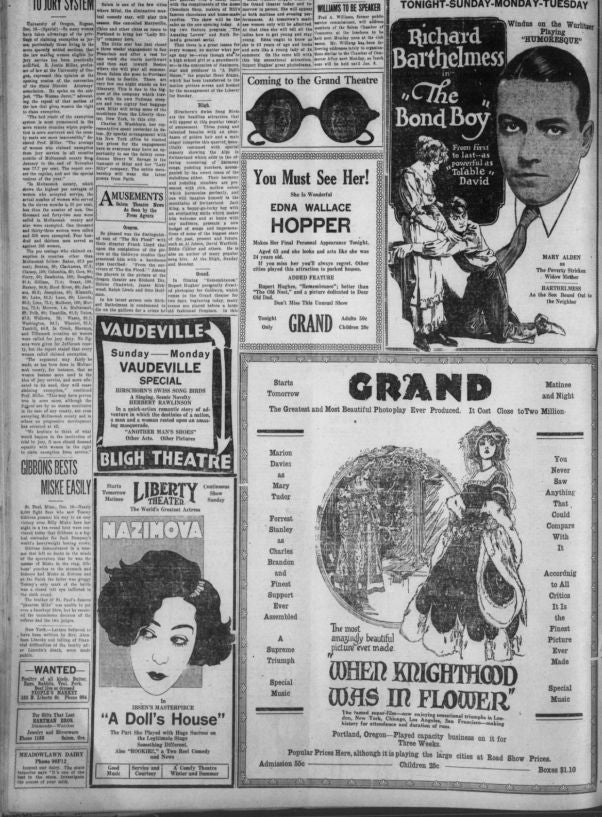The Grand Theatre in Salem, Oregon, was renowned in its size and capability to show a variety of entertainment. Advertised as having a likeness to Portland and Seattle show houses, no other venue could surely compare.
Still, a 1922 issue of the Capital Journal displays a page plastered with advertisements for many different theaters in the area, so how did the Grand stand out from the rest in a time where the Nickelodeon appeared everywhere?
One successful tactic used by the Grand was the proliferation of ads on the newsprint. For example, page ten of the Capital Journal features at least two very large ads for the Grand, while other theaters such as the Bligh and the Liberty theaters only feature one each- at a size much smaller than the Grand.

Interesting too, is the switch in advertising style. In this 1922 ad, the list of actors and their respective parts are displayed- a sign the industry was star-studded. Before, ads of the Grand featured its massive stage, plush seats, and its ability to show a multitude of entertainment, from vaudeville to moving pictures.
The subject of the ads are also of interest. Both ads for the Grand theater feature women, either illustrated or mentioned, as the tactic to get audiences in. One ad reads, “Edna Wallace Hopper makes her final personal appearance tonight. Aged 63 and she looks and acts like she was 24 years old.” Another features a list of actresses that audiences won’t want to miss. While this overt objectification of women was probably prolific for the time, it may also help to determine the audiences these movie houses were trying to obtain. By the ads alone it may be apropos to assume these theaters were advertising to the working class male- able to fit in a show of beautiful women on a day off or between shifts with whatever extra money he may have earned.
